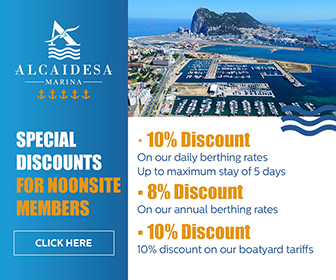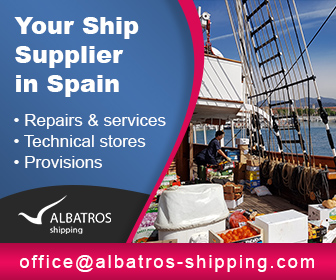Atlantic Iberian Peninsula [“Orca Alley”]: Passage Planning Part 3
Noonsite continues to collaborate with the CA on this series of articles which started in January guiding skippers on how to best-prepare for a passage around the Atlantic Iberian Peninsula (“Orca Alley”). Part 3 covers how to deal with an orca encounter at sea, parts 1 and 2 previously covering pre-departure planning and FAQs. Next month is the final instalment in the series looking at the outlook for the 2024 season.
Published 4 weeks ago, updated 7 days ago
Passage Planning for the Atlantic Iberian Peninsula
Read Part 1. Passage Planning HERE.
Read Part 2. FAQs HERE.
Part 3. What to do at sea should you encounter orcas (in collaboration with the CA)
In early 2023, the number of orca interactions with yachts escalated, and there’s no indication that the situation will ease in 2024. Interactions peak between April to September, with reduced interactions during the winter.
Past behaviour indicates orca activity is concentrated in the Strait of Gibraltar from April to early July as the bluefin tuna exit the Mediterranean, then many of the orca locate elsewhere. However, their movements are unpredictable. At times, they disperse and then simultaneously appear in disparate locations.
It is difficult to predict far in advance exactly where the orca will be at any time in the season as their movements change each year.
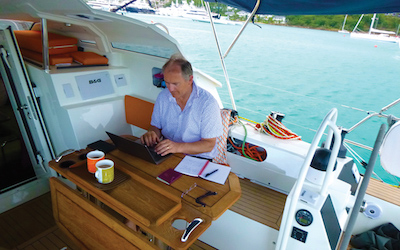

Orca Interaction Preparation:
As outlined in Part 2 of the series, make sure you and your crew depart for your Iberian passage fully prepared:
- Have good knowledge of the danger zone – where are the orca right now and what is their expected movements during your passage? Research the historical data at the CA website and review the monthly interaction maps on the GTOA website. See other resources in useful links at the end of the report.
- Read the various recommended safety protocols and develop your own orca protocol for a possible encounter;
- Familiarise yourself with the Emergency Services: VHF Channel 16, telephone 112 and contact details for the Maritime Rescue Coordination Centre, Maritime Search and Rescue and Coastguard of the waters you are transiting, telephone: France 196 / Portugal 112 / Spain 900 202 202
- Input emergency services numbers into you and your crew’s phones. Print out a copy, laminate and fix close to the chart table/VHF for easy reference;
- Prepare a list of emergency ports of refuge for repairs, boatyard and tow company contact numbers;
- Download and install the useful orca information and reporting apps – GT Orcas and Orcinus. There is also useful information on the Orca attack Facebook groups, including the most active Orca Attack Reports. See other resources in useful links at the end of the report.
- Have a good understanding of possible deterrent measures and prepare accordingly;
- Prepare a grab bag should you have to abandon ship;
- Ensure you have suitable lines on board and prepared, in case at any point you need to ask for a tow;
- Know how to submit a passage report (see notes on this later in the article).
Plan in advance your strategy to navigate around the orcas and their current expected position.
If your route crosses an area where the orca are currently located, it is recommended to plot a course inshore in less than 20m of water, or a long way offshore. Calculate so you reach the area of danger during daylight hours.
Discuss with your crew the procedure you intend to carry out if you encounter orcas and develop an orca protocol. All crew should know their role in the protocol and practice beforehand so everyone on board is confident with how to behave and what to do.
The CA has prepared a checklist of actions to take before transiting through the affected areas.
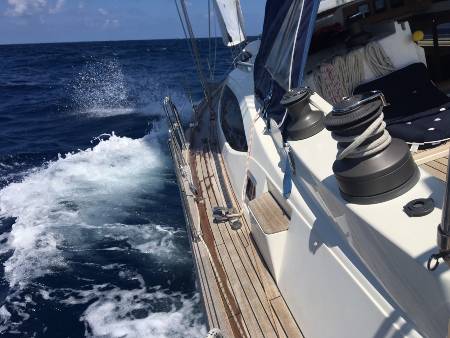

Be Vigilant on Passage:
- Ensure all crew are wearing lifejackets and post a lookout at all times.
- There are dangers of orcas approaching and colliding with the rudder while holding onto the wheel.
- Keep the VHF on at all times, Channel 16, to listen out for any yachts reporting sightings/interactions.
- Regularly check the orca reporting apps/facebook pages to keep track of any activity.
- Always transit danger areas in daylight and under motor.
- Have your grab bag ready in an easily accessible position and towing lines.
When transiting these waters where the orca are believed to be, it is safer to stay in waters under 20 meters deep and close to the shore if conditions permit. To date there are no confirmed reports of interactions in such waters, but this must be balanced against the risks of navigational hazards such as rocks and fishing buoys.
Seasonal tuna nets are also another hazard off this coast, particularly off Conil, Barbate, Zahara, and Tarifa, however, they are charted and well-buoyed. Skippers will have to decide whether to pass them inshore (only recommended if conditions are calm), or offshore (where perhaps the nets extend into depths that orca like to hunt).
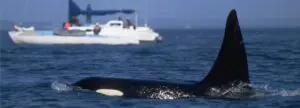
Orca encounter – what should I do?
There is a great deal of discussion about the best response should orcas approach your boat, some passive and others active. To date there is no certain way to stop an interaction once it starts, but possible courses of action are detailed in the CA’s library of comments from skippers on deterrent measures and actions taken during an orca interaction. It should be noted that some of the more aggressive measures are illegal in the various territories (such as pingers). The Iberian orca is a protected species in Spain and Portugal.
Some important things to remember:
- Contact the authorities to alert them to the presence of orca (see preparation notes above for details).
- Crew should all refrain from moving around the boat during an encounter, keep low in the cockpit and hold on tight.
- Let go of the steering because of the danger of injury from the forceful blows to the rudder transmitted through the steering wheel or tiller.
- Execute your rehearsed orca protocol.
- Many recommend leaving the area as fast as possible heading towards shallower water.
- Make a note of location co-ordinates and timing of the interaction along with any other relevant details including the behaviour of the orcas for future reporting.
- If you need a tow, speak with the CoastGuard on VHF Channel 16 or phone 112 for assistance.
Submit a Passage Report!
Encounter or not – every passage is important and the CA needs that data!
Help scientists better-understand by providing details of your experience completely anonymously. Give valuable data to help both orcas and sailors.




Whether you experience an interaction or uneventful passage, submit a report to the CA’s report database:
- Report an Interaction: https://www.theca.org.uk/orcas/interaction-report-form
- Report an uneventful passage: https://www.theca.org.uk/orcas/uneventful-passage-report-form
Discover, learn, share and help others
https://www.theca.org.uk/orcas
Next month will be the final report in the series when we talk about the anticipated orca outlook and their movement for the start of the 2024 season.
Useful Orca links:
- CA: Be safe and be prepared for orca season
- CA orca interaction deterrent library
- CA interaction map
- GTOA Traffic Lights and Interaction Maps
- Orcas.pt Facebook Group (with Telegram groups for sharing info.)
- Orcas.pt You Tube Channel
- Orca Attack Reports Facebook Group
- Watch the webinar recording on ‘Orca and Yachts: Fact, Fiction and Fear’
- Yachting Monthly Article: Dealing with orca attacks and how to navigate orca alley
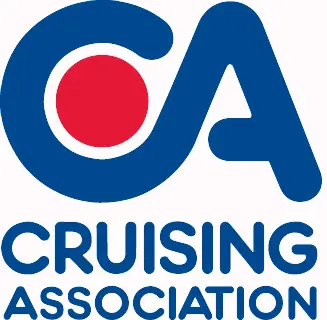
The Cruising Association [CA] has been collecting data since June 2022, in collaboration with Grupo de Trabajo Orca Atlántica [GTOA], both from skippers that have encountered orcas and those that have had an incident-free (uneventful) passage along this coast. This valuable data has enabled a huge library of reports and guidance to be established for yachts, which continues to grow as more passage reports are received. If a passage through “orca alley” is in your plans this year, be sure to use the CA’s free resources to stay informed as well as contribute to this incredibly important project post-passage to help keep both sailors and orcas safe.
Related to following destinations: A Guarda, Aber-wrac'h, Albufeira, Algeciras, Alvor, Arcachon, Atlantic Coast (France), Atlantic Coast (Portugal), Audierne, Aveiro, Aviles, Baleeira (Sagres), Barbate, Bayonne, Benodet, Bilbao, Brest, Burela, Cadiz, Camaret-sur-mer, Capbreton, Cascais, Chipiona, Concarneau, Corcubion, Douarnenez, Ensenada de Santa Marta, Figueira da Foz, Finisterre, France, Gibraltar, Gibraltar Port, Gijon, Gironde Estuary & Bordeaux, Guetaria, Hendaye-Behobie, Hondarribia, Huelva, Isla Canela, Isla Cristina, La Baule(Pornichet), La Coruna, La Linea, La Rochelle, La Trinite-sur-Mer, Lagos, Leixoes (nr Porto/Oporto), Les Sables d'Olonne, Lisbon, Loctudy, Lorient, Malaga, Mazagon, Mutriku, Nantes, Nazare, North West Spain, Oeiras, Pasaia, Pauillac-Trompeloup, Peniche, Piriac-sur-mer, Port Crouesty, Port Joinville (L’Ile d’Yeu), Port-La-Foret, Portimao, Porto (Oporto), Portugal, Povoa de Varzim, Puerto Banus & Marbella, Quibiberon Bay, Quimper, Ria de Arousa, Ria de Camarinas, Ria De Cedeira, Ria de Muros, Ria de Pontevedra, Ria De Ribadeo, Ria de Vigo and Baiona, Ria De Viveiro, Ria Formosa (Faro & Olhao), River Guandiana - Ayamonte, River Guandiana - Sanlucar, Rochefort, Royan & Port Medoc, Saint-Jean-de-Luz, San Sebastian, Santander, Sesimbra, Setubal, Sines, South Coast (Algarve), South West Coast (Spain), Spain, St Denis d’Oleron, St Nazaire, Tavira, Troia, Vannes, Viana do Castelo, Vila Real de Santo Antonio, Vilaine River and Roche Bernard, Vilamoura
Related to the following Cruising Resources: Atlantic Ocean East, Cruising Information, Navigation, Orcas and Yachts, Planning and Preparation, Routing



